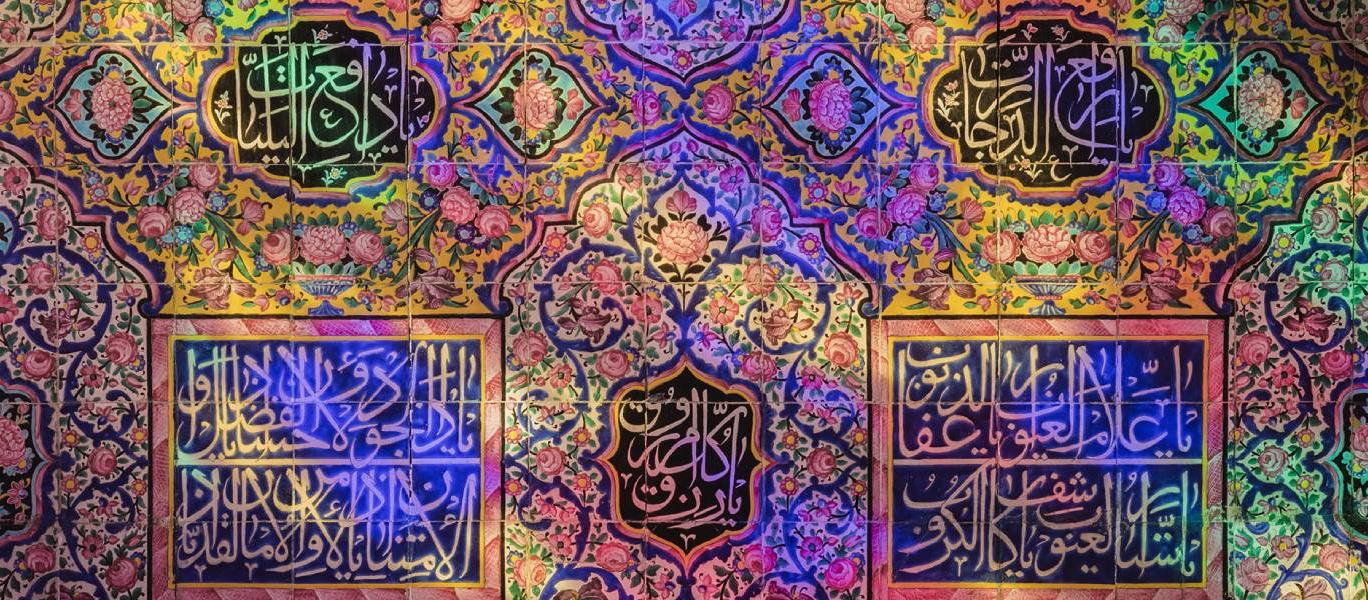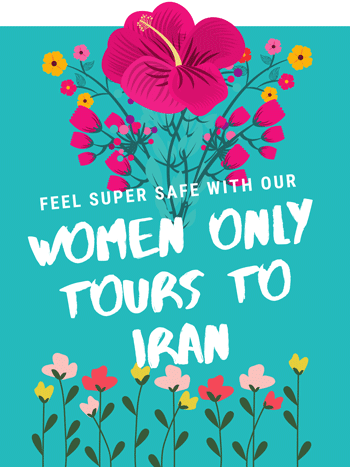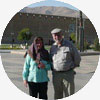three decades of experience in Iran Travel Services
10 World Heritage sites in Iran
Numerous attractions of Iran are registered in the UNESCO World list, among which can be referred to Imam Khomeini, the Golestan Palace, Sheikh Safi-e Ardebili and Pasargad mausoleum.
Iran is one of the oldest civilizations in the world and therefore there are numerous attractions around the country to see the beautiful. In the meantime, 19 valuable locations can be mentioned in the UNESCO World Heritage List. From the palaces and markets to the sanctuary and the ancient irrigation system and the remnants of the great Iranian Empire are seen on this list. Stay tuned with us to introduce up to 10 of these beautiful attractions.
Do not forget that in addition to introducing the tourist attractions of domestic and foreign destinations and introducing restaurants and travel guides, we also introduced the best travel tours.
Emam Square, Isfahan
You can easily take a full day at the Imam Square of Isfahan and enjoy the stunning architecture and the surrounding market. The world role Square was recorded on January 28, 1313 in the national list of Iran, and in May 1358 was among the earliest Iranian monuments registered as UNESCO World Heritage Site. Various sources have attributed the current building to the reign of Shah Abbas I and the 1011 lunar year. Mr. Mohammad Reza and Ostad Ali Akbar Esfahani were two Iranian architects who designed the field and built the current form.
Monuments in the four sides of the world's role field include the excellent Qapu, Shah Mosque (Imam Mosque), Sheikh Lotfollah Mosque and Caesarea Gate, which are connected to each other by an arcade and two-story paths, and in these paths, 200 chambers are located in the supply of Isfahan handicrafts. Imam Mosque with the largest dome of the city and Sheikh Lotfollah mosque with fantastic tiles shocked every viewer. The Qapu high palace for a music room, mosaic stairs and its landscape to Imam Square is really spectacular. The gate of Caesarea is also the gateway to the market that takes you to one of the oldest markets in the region. By watching this field, it gives you a sense that you have seen half the world in the same day.
Golestan Palace
The Golestan Palace with Valley has over 440 years is one of the most unique historical collections of Iran, which was registered in the UNESCO World Heritage site in 1392. The palace is located near the Grand Bazaar of Tehran and has been the headquarters of the Qajar government. Although the history of the Golestan Palace returns to Shah Abbas Safavi (988 AH), it is possible to start the area that we now know in the name of the Golestan Palace, and between the years 1173 to 1180. And with the creation of the same house.
The Golestan Palace with Valley has over 440 years is one of Iran's most unique historical collections
The House's architecture is well-designed in Iranian early Qajar and Western influences. The luxurious dock, green spaces and mosaic views can be seen throughout the complex. Its interiors are also comprised of various halls, including large lit halls with beautiful chandeliers to cozy low-light rooms with mirror walls and stained glass. The Painting Masterpieces of Kamal-ol-Molk also look at the entire House buildings, which you should not be unaware of. To be in this collection, take advantage of the opportunity and wear the ghajari of the Kings or princes and take beautiful photos with the background of the beautiful Persian architecture of the Golestan Palace.
BAM and its cultural landscape
The desert city of Bam is located in the south of Kerman province, with its own landscape in 1382 in the UNESCO World Heritage List. Looking at the city of Bam, tourists quickly imagine a sandy palace in a real dimension in their minds. The most famous attraction of Bam is the citadel of Bam, where its inception is more than 2000 years old and the time of the Parthian Empire.
Citadel of Bam was the largest clay structure in the world, which was built in between 6 and 4 BC and used as the headquarters of the government. The Citadel area is close to 180 thousand square meters, which is surrounded with a height of 6 to 7 meters and a length of 1815 m. According to the current appearance of the Citadel, it can be said that designers or designers have predicted the final shape of the entire building and the city from the same basic steps of the construction process.
The Citadel, on December 26, 1382, caused a severe earthquake that influenced the city of Bam and its suburbs and killed more than 26 thousand people, almost completely lost and after the tragedy, the work of reconstruction began. The products such as dates, citrus, henna, cruciferous vegetables, and the handicrafts produced from the palm tree, such as the famous and important BAM souvenir, are made possible by their cultivation, thanks to the vast qanat system (the ancient water-supply underground system).
Pasargade
Manuel Banda, the Brazilian poet, entitled A poem by "I'm going to Pasargad," and in that it depicts an unhappy man of life, which speaks of escaping to this imaginary city. Pasargad City is located in a remote area of about 50 kilometers in Shiraz, and even though it may not be an imaginary city, but it is the first capital of the Achaemenid Empire, which was built in the sixth century BC by Cyrus the Great. This collection contains buildings such as the tomb of Cyrus the Great, Pasargad, Garden of the royal Pasargad, Palace Gate, Bridge, the palace, the exclusive palace, the two Koshk, the Waterfront garden views, the tomb of Cambyses, the Tel-flat defensive structures, the caravanserai, the sacred area and the Strait of Gorge. Pasargad is the fifth registered collection of the Iranian World Heritage List, which was registered in July 1383.
The most challenging points of the Achaemenid Empire are respected for cultural and religious diversity. The main part of Pasargad belongs to the tomb of Cyrus the Great, which is said to be a big show, after the destruction of Persepolis, he is personally visited.
Mausoleum of Sheikh Safieddin Ardebili
Sheikh Safi al-Din Ardebili is one of the historic and ancient places in Ardabil City, which was registered in the UNESCO World Heritage site in 1389. The leader of the Sufi Islamic Sufism is located in the same place, and according to Sheikh, he buried his body in a room near the house and Garden and the House dock, and on his grave, in addition to the tomb of Sheikh Safi and Sepulcher Shah Ismail, the other princes of the Safavid and their children were also buried in this monument. This tomb has been built in between 16 and 18 century and showcases a combination of Sufi and Iranian construction traditions. The path to the tomb consists of seven steps that refer to the seven stages of Sufi mysticism, and other parts are divided into eight gateways, indicating eight quirks.
The unique cases of this collection are dozens of exquisite effects in different themes of art, such as the most excellent type of mosaic tiles and plaster, and more. Different parts of this monument are for various purposes such as library, mosque, school, tomb, water warehouse, etc.
Tabriz Historic Bazaar
Due to its location in the Silk Road, Tabriz has always been an important business center which was registered in the UNESCO World Heritage site in 2010. The bazaar of Tabriz is the largest and most important indoor market in the world and one of the oldest markets in the Middle East, with approximately 5,500 rooms, shops and shops, 40 occupations, 35 Serra, 25 Timas, 30 mosques, 20 orders and market orders, 11 corridors, 5 bathrooms and 12 schools are known as the main trading center of Tabriz people. Different parts of this brick red to sell certain goods such as gold and jewelry, shoes, household appliances, etc. Is allocated. Perhaps the most prominent part of this market can be the market of rugs that shopkeepers are engaged in the sale of dyed yarn, carpet, etc.
Many domestic and foreign tourists place Tabriz in their travel plans and are sure to visit the Tabriz market.
Soltaniyeh Dome
Soltaniyeh Dome of Zanjan is the famous mausoleum of Mohammad Khodabandeh, which has been in Soltaniyeh (capital of Iran) between the years in 702 to 712 and is considered as the most important works of Iranian and Islamic architecture. Interestingly, he was a Christian, and Christianity to the Buddhist faith and later changed his religion to Islam. The brick dome of Soltaniyeh is the third largest dome of the world after the dome of the Basilica of Santa Maria del Fijoura and the dome of the mosque, and turquoise tiles shine from a distant distance in sunlight and when you close to it, you see eight narrow minarets that adorn the dome of this octagonal. The building consists of eight porches and eight minarets, which are said to have been modeled from eight in paradise.
The decorations and how to make this tomb is actually a milestone in the architecture of the era and created a new style in architecture that has been separated from the Salam architecture. The building has two decorating periods, the first round consists of brick and tile decorations that verses from the Koran and the name of Allah and Muhammad, Ali and the name of Sultan, but after a while for the unknown reason.
The hydraulic system of Shushtar water supply
The hydraulic water supply system of Shushtar is a continuous set of bridges, bands, mills, waterfalls, canals and massive tunnels of water guidance that work in conjunction with each other and in the Achaemenid era until Sassanian has been made for greater use of water. This ancient irrigation system, which UNESCO remembers as a "creative genius masterpiece", is a place in the UNESCO World Heritage List in 2009. The system consists of two main channels of water guidance on Karun River, which through a series of tunnels, supplies the city water. Water from the tunnels flows into the reservoir, from there, to the smooth plains flowing to the watering of the gardens and farms used. Other engineering structures of this complex can be considered as bridges, dams and watermills. The hydraulic system of Shushtar is well represented between Mesopotamia and the effect of Roman engineering.
Iranian Armenian monastic complex
The Iranian Armenian monastic complex consists of three Armenian churches (the oldest church of this complex, which reaches the seventh century), the Holy Stephenson Church and the Basilica of force, which is located in West Azerbaijan and East Azerbaijan provinces. These churches have been built in the period between the seventh and 14th centuries AD, over the centuries, many natural and human disasters have been left behind and have been rebuilt several times over time. Armenian Churches Collection on July 8, 2008 was registered as a cultural heritage in the UNESCO World Heritage List. These three churches are still being used as a place to worship the Armenian community.
The importance of these churches in architecture is to showcase a compilation of the cultures of the Byzantine, Orthodox and Iranian region. The Holy Stephenson's Church, which is more famous than two other churches, is located 17 kilometers west of Jolfa city and at a distance of 3 kilometers south of the Aras River in the local area called Qezel Vank (the Red Monastery). The whole church area is located in the heart of the mountains and among the green nature of the Jolfa.
Persepolis
Persepolis, which was also called gamers and Persepolis, was in the list of UNESCO World Heritage sites in 1358. This ancient city has been the magnificent capital of the Kingdom of Iran at the time of the Achaemenid Empire, which was founded by Dariush Major, Xerxes and Ardeshir I, for about 200 years. From this magnificent civilization, there are very large pillars and numerous carvings that will depict the different nationalities that walk in this place, three tombs in the mountains of Persepolis. The tourists are climbing the stairs to the United Nations, and they can feel the splendor of this ancient empire closely.

















